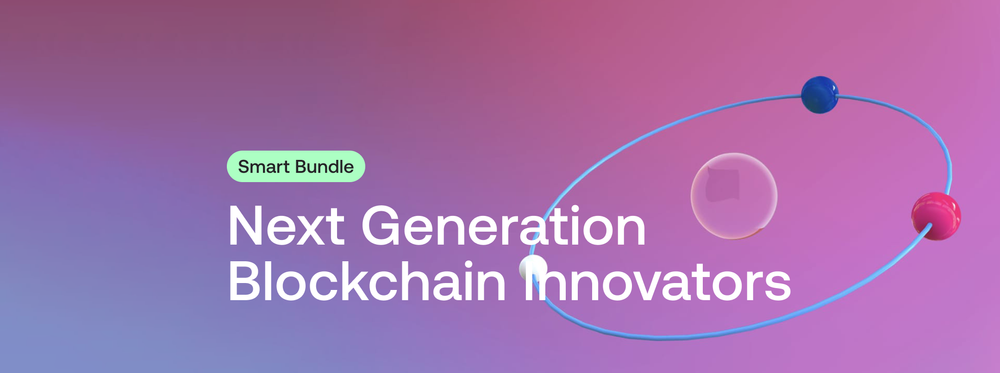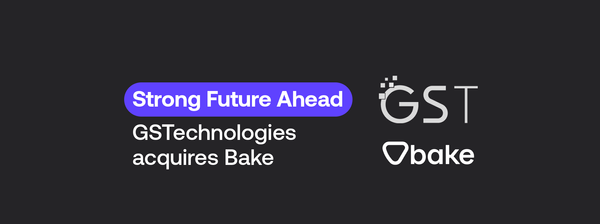Blockchain’s Next Evolution – Solving Interoperability
As the crypto industry grows, the number of unique blockchain networks increases. The more unique blockchain networks, the more fragmented the industry becomes.
As of January 2024, there are estimated to be 99 established blockchain networks on the market. A number that is anticipated to continue growing as the industry expands.
Each network operates with it’s own isolated island of data and value, unable to natively communicate with anything outside of it’s own ecosystem.
This fragmentation mirrors the early days of computer networks before the advent of standardized internet protocols. For example, imagine you use Gmail, but your friend uses Yahoo email. If these systems weren’t standardized, you and your friend would not be able to send emails to each other.
This seems unimaginable by today's standards, but this is how current blockchain ecosystems operate — siloed from one another, unable to communicate.
In a digital era where connectivity and collaboration are key, this lack of standardization significantly hampers the growth and practicality of blockchains.
The solution — interoperability.
Interoperability is defined as the ability of computer systems or software to exchange and make use of information. Interoperability is the bridge that connects blockchain ecosystems, allowing for a seamless flow of information and assets. It is the next step in blockchain evolution and represents a paradigm shift towards a more interconnected and efficient digital ecosystem. Interoperability allows diverse blockchain networks to collaborate and interact without friction.
What Is Blockchain Interoperability?
Blockchain interoperability is the ability of different blockchains to understand, trust, and interact with each other.
It is what enables multiple blockchain networks, each with its unique features and strengths, to collaborate, share data, and transfer assets in a secure and efficient manner.
It can be thought of as the universal language for blockchain communication. Similar to how different email providers allow for communication between different email systems.
The next generation of interoperability solutions will defragment the blockchain industry and unlock the full potential of the technology.
Different networks will be enabled to seamlessly leverage each other's strengths and share resources, expanding the boundaries of any individual network.
The Importance of Blockchain Interoperability
Blockchain interoperability is a key driver for the widespread adoption and success of blockchain technology.
Interoperability enhances the overall utility and efficiency of the blockchain ecosystem, making it more robust, versatile, and user-friendly.
For businesses and organizations, interoperability means the ability to tap into multiple blockchain networks without being confined to a single platform. This offers flexibility and access to a broader range of features and services.
For instance, a company could use Ethereum for its smart contract capabilities while relying on another blockchain, like Solana, for its superior transaction throughput.
From a user perspective, interoperability allows for seamless transacting across different blockchain networks without worrying about compatibility issues.
This ease of use is crucial for bringing blockchain technology to mainstream users who may not be technically inclined.
Furthermore, interoperability fosters innovation. When developers can build applications that leverage multiple blockchain networks, they can create solutions that were previously thought impossible.
This cross-pollination of ideas and technologies accelerates the development of more sophisticated and useful blockchain applications.
Types of Blockchain Interoperability Solutions
Cross-Chain Transactions
Cross-chain transaction solutions address the need for value and data transfer across different blockchain networks. They focus on enabling transactions and the transfer of value between different blockchain networks.
Examples of cross-chain technologies include:
- Decentralized Bridges: Use a combination of smart contracts and a dedicated consensus mechanism to transfer assets and information between blockchains.
- Cross-Chain Decentralized Finance (DeFi) Protocols: These platforms allow for financial activities like lending, borrowing, and trading to occur across different blockchains, broadening the scope of DeFi services.
- Multisignature Wallets: Increase the security of cross-chain transactions by requiring multiple signatures to authorize a transaction.
Blockchain Agnostic Protocols
Blockchain-agnostic protocols are a unified framework that allows various blockchains to interact and communicate. They are designed to act as a middle layer that translates and relays information between different blockchains, making them interoperable.
Examples of blockchain-agnostic protocols include:
- Cross-Chain Smart Contracts: Smart contracts designed to operate across different blockchains. These contracts can be executed on multiple chains, broadening their applicability and efficiency.
- Protocol Bridges: These serve as connectors that translate and relay information between blockchains with different protocols (E.g., Bitcoin to Ethereum).
- Standardization Initiatives: Creating a standardized format for blockchain communication, such as a standardized programming language or automated code interpreter.
Inter-Blockchain Communication
Inter-Blockchain Communication (IBC) involves creating direct communication channels between different blockchains, allowing them to share data and execute joint operations. This solution is especially useful for applications that require collaboration across multiple blockchain networks, such as DeFi, supply chain management, and cross-chain data verification.
Examples of IBC solutions include:
- Chain Relays: Mechanisms that allow one blockchain to verify events and transactions that occurred on another chain, enabling trustless interoperability
- Shared Security Models: Implementing models where multiple blockchains can share a common security protocol (E.g., Layer 2 solutions like ZK Rollups)
- Sidechains and Plasma Chains: Secondary blockchains attached to a primary blockchain (mainchain) that process transactions and then report back to the mainchain, increasing scalability and interoperability.
The Projects Solving Blockchain Interoperability
Several innovative projects have emerged at the forefront of the interoperability space. Considered “next-generation” blockchains, each offers its own unique solution to the interoperability challenge.
Polkadot (DOT)
Polkadot’s groundbreaking parachain architecture allows multiple blockchains (or “parachains”) to run in parallel and communicate with each other while piggybacking off the security of the main Polkadot Relay Chain.
This architecture enables a high degree of customization for each parachain while maintaining interoperability and shared security.
Polkadot's approach tackles two critical issues in blockchain technology: scalability and interoperability. By allowing multiple blockchains to operate simultaneously and interact, Polkadot facilitates a more scalable and interconnected ecosystem.
Such a system enhances the efficiency of individual blockchains and opens up new possibilities for cross-chain applications and services.
Polkadot’s mission is to create a truly decentralized and user-friendly blockchain ecosystem where various networks can coexist and collaborate under a unified framework.
Cosmos (ATOM)
Cosmos takes a unique approach to blockchain interoperability with its 'Internet of Blockchains' concept.
At the heart of Cosmos is the “Cosmos Hub”, a central blockchain that connects various independent blockchains (known as “zones”).
These zones interact with each other through the Cosmos Hub, effectively utilizing it like a grand central station that orchestrates traffic between them. This setup allows the zones to maintain their sovereignty and unique attributes while still being able to communicate and transact with one another. It's a design that mirrors the structure of the internet, where separate networks connect through central nodes yet operate independently.
Cosmos also employs a modular framework, allowing developers to build their blockchains with customizable features. These blockchains can then connect to the Cosmos Hub using the Cosmos Inter-Blockchain Communication (IBC) protocol.
The Cosmos model allows for a high degree of customization for each zone, catering to specific use cases and requirements.
Similar to Polkadot, Cosmos also provides a scalable solution for blockchain interoperability, as new zones can be added to the Cosmos network without affecting the performance of existing ones.
Cardano (ADA)
Cardano is known for its scientific approach to interoperability and emphasis on sustainability and scalability.
The network’s strategy for interoperability involves a layered architecture, separating the settlement and computation layers, enabling more efficient and flexible transactions.
Cardano addresses the technical aspects of interoperability as well as the regulatory and compliance challenges. The platform is designed to be compatible with existing financial systems, making it easier for traditional institutions to adopt blockchain technology.
One of the unique aspects of Cardano is its focus on formal verification methods, which ensure the robustness and security of its protocols. This guarantees that all cross-chain transactions initiated on the network are reliable and secure.
Cardano's vision for interoperability extends to creating a truly global financial operating system using blockchain technology, opening new opportunities for financial inclusion and innovation.
The Future of Blockchain Interoperability
The future of blockchain interoperability lies in the creation of an interconnected “network of networks”. This involves technical integration and a collaborative ecosystem where blockchains can leverage each other's strengths.
The development of universal protocols, cross-chain transactions, and blockchain-agnostic solutions will be key drivers in this journey.
As the blockchain landscape continues to evolve, the focus on interoperability will intensify. The success of interoperable blockchains will not only enhance the utility and efficiency of individual networks but will also pave the way for revolutionary applications and use cases.
From finance to supply chain management, interoperability will unlock the full potential of blockchain technology, driving innovation and creating a more inclusive and connected digital world.
Invest in the Next Generation of Blockchain Solutions
The next evolution of blockchain technology is deeply intertwined with solving interoperability. The efforts and innovations of projects like Polkadot, Cosmos, and Cardano are vital in shaping this future, promising a more interconnected and efficient blockchain ecosystem.
Through Bake’s Next-Gen Blockchain Innovators Smart Bundle (35% DOT, 35% ADA, 30% ATOM), you can optimize your exposure to these three industry-leading blockchain networks.

DISCLAIMER: Please note that the information on this blog and in any articles posted on this blog is for general information only and should not be relied upon as financial advice. Cake Pte. Ltd., Bake, UAB, and its affiliates (the “Cake Group”) are not licensed financial advisers. You may wish to approach your own independent financial advisor before making any decision to buy, sell or hold any product and/or digital assets mentioned in this blog.
Any views, opinions, references, assertions of fact and/or other statements are not necessarily the views held by the Cake Group. The Cake Group disclaims any liability whatsoever that may arise out of or in connection with such statements. Always do your own research before investing in any financial assets and consult a qualified financial advisor if necessary.




